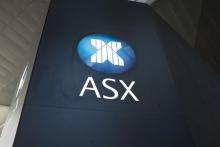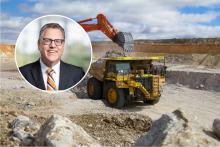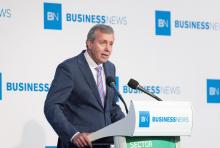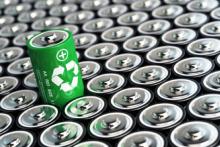ASX-listed Lithium Australia’s wholly owned subsidiary, VSPC has pinned its commercialisation hopes on India as the preferred jurisdiction for the proposed development of its lithium ferro phosphate cathode powder production facility. Perth-based Lithium Australia has just tabled an impressive pre-feasibility study that it says points to robust project economics for the manufacture of advanced LFP cathode powders using VSPC’s proprietary processing technology.


ASX-listed Lithium Australia’s wholly owned subsidiary, VSPC has pinned its commercialisation hopes on India as the preferred jurisdiction for the proposed development of its lithium ferro phosphate cathode powder production facility. Perth-based Lithium Australia has just tabled an impressive pre-feasibility study that it says points to robust project economics for the manufacture of advanced LFP cathode powders using VSPC’s proprietary processing technology.
According to the company, India came out on top as far as delivering the best financial outcomes was concerned, which was helped by a more attractive 17.2 per cent tax rate and competitive operating costs. Australia and Vietnam were also considered.
The PFS shows an Indian plant option translating into annual EBITDA averaging US$66 million a year and annual free cash flows of US$56 million a year.
Other key base-case metrics in the PFS include a net present value of US$253.4 million and an internal rate of return of 33 per cent, predicated on an initial forecast operating life of 13 years.
It envisages LFP-based cathode powder production ramping up to nameplate capacity of 10,000 tonnes per annum in three years from start-up, reaching the output level in 2026.
CAPEX for construction of the proposed VSPC LFP plant in India has been estimated at US$113.4 million spread over two stages of investment – US$66.5 million and US$46.9 million – across three years. The PFS anticipates a capital payback period of five years.
VSPC’s LFP production has been assumed to kick off in October 2023.
Vietnam ran a close second to India, however, Lithium Australia says having a plant in India presented strategic appeal in terms of it supplying into both the international market and an emerging domestic market.
Punters seemed to like the sound of the PFS numbers, pushing up Lithium Australia’s stock more than 18 per cent in today’s trading session.
Lithium Australia Managing Director, Adrian Griffin said: "At present there is little LFP production outside of China, with original equipment manufacturers striving to secure alternative supply chains. Lithium Australia and VSPC aim to provide that supply chain security.”
According to the company, global demand for LFP has jumped more than 25 per cent over the past 12 months, lifting Chinese LFP cathode powder manufacturing above an annualised 100,000 tonnes per annum.
Approximately two per cent of global LFP cathode powder production originates from outside China, Lithium Australia says.
The company contends that with many major electrical vehicle manufacturers already producing LFP battery-powered vehicles within China and making these available in other jurisdictions, North America and Europe are likely to be sources of rapidly rising demand for LFP consumption.
Added to the mix has been the recent announcement by the Volkswagen Group that its entry-level EVs will be powered by LFP lithium-ion batteries.
Last year, LFP emerged as the standard battery chemistry in China and more broadly for lower cost and standard range EVs.
Lithium Australia points out that in China, LFP accounts for more than 40 per cent of passenger EV models and battery platforms for e-buses and special vehicles such as logistics trucks, rubbish trucks and road cleaners are almost exclusively LFP battery-powered.
LFP’s importance as a lithium-ion cathode material has been underlined by recent EV industry trends, including Tesla’s manufacture of the Model 3 with an LFP battery for markets in China and Europe, and the decision by Contemporary Amperex Technology, or CATL to invest in new LFP manufacturing capacity in China.
Independent research house, Roskill suggests an aggressive take-up of LFP by the EV making industry may see LFP demand soar more than four-fold to 500,000 tonnes per annum by 2025 and 1.3 million tonnes per annum by 2030.
Expansion of LFP cathode material capacity is required in China and internationally, Lithium Australia says, as demand increases for LFP batteries in EV applications and to replace lead-acid batteries in automobiles, back- up power supplies and stand-alone power for remote site applications.
Given the strong predicted growth in demand for LFP cathode material, the VSPC business plan revolves around tapping into the expected growing market for LFP outside of China.
Lithium Australia says it has now committed to a definitive feasibility study on the proposed project development and will look to engage an engineering contractor for the DFS ahead of a planned commencement date of July this year.
Is your ASX-listed company doing something interesting? Contact: matt.birney@businessnews.com.au













